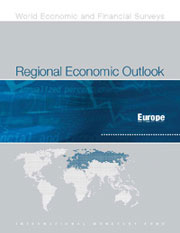Europe
Central, Eastern, and Southeastern Europe
November 2016
[$token_name="PublicationDisclaimer"]
Reports and Related Links:

Effective Government for Stronger Growth
EXECUTIVE SUMMARY
Economic growth remains solid in much of Central, Eastern, and Southeastern Europe (CESEE). Outside the Commonwealth of Independent States (CIS), growth has continued at a good pace on the back of accommodative macroeconomic policies as well as buoyant consumption supported by strong real wage and employment growth. In Russia, the pace of economic contraction has moderated, as the economy appears to have adjusted to lower oil prices and the sanctions shock. Other CIS economies are gradually exiting from recessions on improved external demand. For the region as a whole, GDP growth is projected to reach 1.3 percent in 2016 and 2.1 percent in 2017, largely reflecting the improved outlook in the CIS.
Given mediocre prospects for potential growth and a cyclical rebound near completion outside the CIS, current growth may be difficult to sustain. With several years of growth near 3 percent, there are signs that output gaps appear closed outside the CIS, as unemployment rates are falling to pre-crisis levels, real wages are growing strongly, and credit growth is reaccelerating. However, inflationary pressures are still low and external balances healthy. Still, given subdued productivity growth and adverse demographics, these countries may not be able to maintain strong growth without renewed widening of external imbalances.
While some risks to the outlook have diminished, downside risks still dominate. Some risks, such as the pace of monetary normalization in key advanced economies and the refugee crisis in Europe, appear less prominent than six months ago. Other risks, however, such as those associated with rising political discord, have become more pronounced. Despite its modest
impact so far, the longer-term effects of Brexit—the U.K. vote to leave the European Union—are yet unclear, given the uncertainty about the new U.K.-EU economic arrangements.
Policies need to strike the right balance between supporting near-term growth and rebuilding fiscal space. Over the near-term, monetary policy is expected to remain accommodative or to ease in countries where it is tight, which seems generally appropriate given expected inflation. At the same time, fiscal policy appears to be neutral or expansionary in many countries. In those economies where growth has been running above potential and output gaps are closing, this is no longer appropriate. Rather, the relatively good times should be used to rebuild fiscal buffers by following growth-friendly fiscal consolidation, which would also help reduce still high external debt levels.
For the entire region, the defining challenge is to re-accelerate potential growth and convergence. This will require a new round of structural reforms to raise investment and productivity, as discussed in the Spring 2016 Regional Economic Issues (REI) report. Priorities vary across countries and include strengthening governance and institutions as well as improving labor supply by increasing participation rates and reducing structural unemployment. This report focuses on measures to improve public investment management and tax administration.
The need to lift potential growth and rebuild fiscal buffers puts a premium on improving public investment management and tax administration in CESEE countries. High-quality public investment can help boost potential growth in the region, given still large infrastructure gaps relative to advanced Europe and generally low investment rates. At the same time, many CESEE countries are still facing sizeable fiscal imbalances. In this setting, improving public investment management institutions and tax administration can help create fiscal space that can be used to boost public investment or to reduce the still-elevated fiscal deficits.
Based on an in-depth analysis of public investment management and tax administration in CESEE, this REI finds the following:
- Closing efficiency gaps in public investment and tax collection could bring sizable benefits. Public investment in many CESEE countries, except the Baltic states, is less efficient than in other European countries. Tax efficiency gaps—and in particular, tax compliance gaps—remain a challenge in much of the region as well. By reducing these efficiency gaps (estimated relative to the income level-specific benchmarks), CESEE countries could generate between 2 and 4 percent of GDP in fiscal space annually that could be used either for public investment or for fiscal consolidation. Based on the standard estimates for public investment multipliers (see the October 2014 World Economic Outlook), such additional public investment could increase the level of GDP by 2–4 percent over the medium term, with the exact numbers depending on the degree of slack in the economy and on the efficiency of public investment. There are also broader benefits from having better public institutions, including a smaller shadow economy.
- Further upgrades of public investment management should focus on improving allocation and implementation frameworks and procedures. Project appraisal and management could be strengthened by building capacity, publishing cost-benefit analyses of major projects, developing procedures for project adjustment, and conducting ex-post evaluations. In CESEE EU countries, stronger public investment management institutions are associated with higher absorption of the EU structural and cohesion funds.
- Improvements in tax administration should aim at reducing compliance gaps. Countries where tax collection is not unified in a single body or where a functional structure is lacking need to bring their institutional arrangements in line with best practice. Also, many CESEE countries seem to be lagging in provision of online services due to outdated and fragile systems that significantly constrain their reform efforts, including adoption of a strategic management approach to tax compliance. Several countries also need to improve operational performance—particularly those with high tax debt.
- Successful reforms to raise government effectiveness require taking into account political economy factors. Certain features of political institutions, such as poor accountability, low quality of bureaucracy and weak control of corruption in politics, tend to be negatively correlated with the strength of public investment management and tax administration. To overcome these constraints, the design of reforms should include elements that help reduce resistance to reforms and build the support base for their successful completion.


